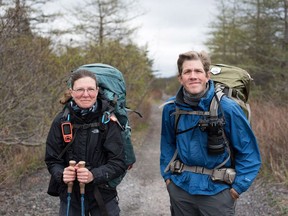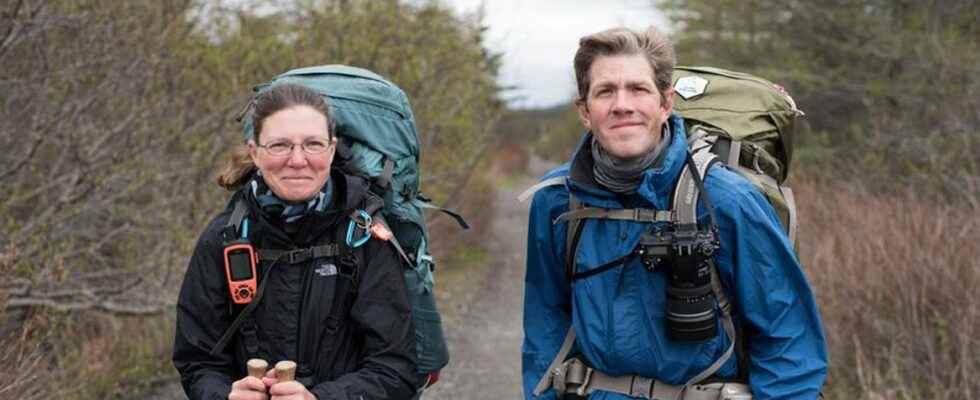
Sonya Richmond has worn through five pairs of hiking boots in three years.
That tends to happen when you spend your days walking across Canada.
After nearly a decade as an analyst with Birds Canada in Norfolk County, Richmond decided to take wing on a cross-country quest to get Canadians excited about nature.
She sold her house in Simcoe in 2019 and headed to Cape Spear, NL, with her partner, Sean Morton, to start a 28,000-kilometre journey that has, so far, seen the couple cross eight provinces on foot and give more than 100 talks about birding and citizen science.
“We’re trying to inspire people to reconnect with nature,” Richmond said.
In particular, she hopes to get tech-obsessed kids off their devices and into the outdoors “to turn some of the screen time to green time.”
The best way to start, she said, is to look up.
“Birds are basically free. No matter where you live or who you are, you can go outside and you’ll see or hear one bird,” Richmond said.
“Even if you can’t go outside, you can have a bird feeder and look at it through the window, and you have that connection to nature.”
After hiking more than 10,500 kilometers in 450 days, Richmond and Morton are motivated to continue their self-funded trip by the “overwhelmingly positive” feedback they get from fellow hikers and people they meet at their presentations.
They typically walk six days a week, toting backpacks that weigh between 40 and 60 pounds, depending on how much food and water they have.
“We don’t eat very well,” Richmond said with a laugh.
They shop at grocery stores when they can, but otherwise depend on snacks from gas stations. When camping in the woods, it’s a steady diet of oatmeal, rice and beans, sweetened by wild strawberries and blackberries.
The couple had completed several long-distance hikes before tackling the longest recreational trail in the world.
On rest days, they recharge their camera batteries and post updates to social media and their website, ComeWalkWithUs.online.
For this interview, Richmond was on the phone in Ottawa, waiting for a train to take her to a Canadian Wildlife Federation awards ceremony in Prince Edward Island. The federation recently named her its Canadian Outdoorsperson of the Year in recognition of her work to promote conservation and inspire Canadians to become stewards of the environment.
Richmond called the award “incredibly humbling.”
“I see it as recognition of our goals and our message, and that’s really encouraging to me.”
She said she is particularly excited that her journey gets her talking to Canadians of all ages and from all walks of life, allowing her to reach beyond her usual spheres of academia and government.
“To create bigger change, we all need to pitch in,” Richmond said. “It can’t just be a handful of scientists or a handful of government employees. It needs to be everyone.”
The couple will next pick up the trail at the Saskatchewan-Alberta border, with plans to reach the Pacific Ocean at Victoria, BC, by mid-October.
Once the snow falls, they will head to Morton’s hometown of London, Ont., where Richmond does contract scientific work — and impatiently waits to get off the computer and back on the trail.
After the spring thaw, they will start north to their final destination of Tuktoyaktuk, Nunavut.
“Depending on forest fires, floods, weather, everything else,” Richmond said.
The pandemic forced the couple to skip over Quebec when that province tightened its borders, and instead hike through Ontario and Manitoba in 2020. They doubled back to Quebec this spring.
“Every season has been shorter than we originally planned,” Richmond said. “We had to wait for the lockdowns to end.”
But she said the experience of staying inside to stop the spread of COVID-19 made people across the county hungry for the outdoors.
“Now that there is this interest in nature, we need to keep developing that and keep it alive.”
JP Antonacci is a Local Journalism Initiative reporter based at the Hamilton Spectator. The Local Journalism Initiative is funded by the Government of Canada.
